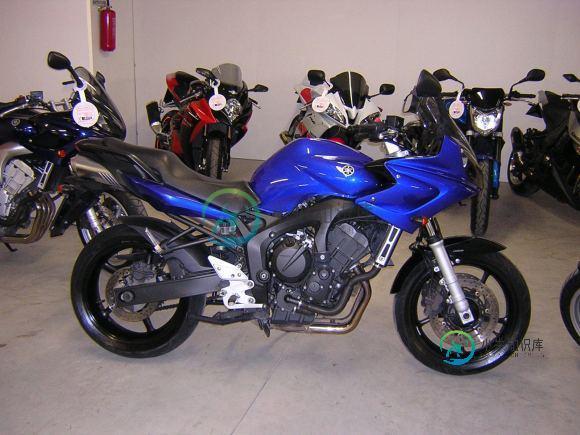How to get a good quality thumbnail
I am trying to create a high quality thumbnail of this image, with Java
and Scalr 3.2

This is the relevant source code, where THUMB_WIDTH = 77 and THUMB_HEIGHT = 57
BufferedImage srcImg = ImageIO.read(new File(sourceFile));
BufferedImage dstImg = Scalr.resize(srcImg, Scalr.Method.QUALITY,
THUMB_WIDTH, THUMB_HEIGHT);
ImageIO.write(dstImg, format, new File(destFile));
If I use format = "png", here is the result:

If I use format = "jpg", here is the result:

With imagemagick identify
I’ve found out that the JPEG is saved with a quality of 75 that is totally
insufficient to create a good looking thumbnail. The PNG doesn’t look good
either to me.
Here is the output of identify of the original file and the two thumbnails:
$ identify 42486_1.jpg 42486_s1.jpg 42486_s1.png
42486_1.jpg JPEG 580x435 580x435+0+0 8-bit DirectClass 50.6KB 0.000u 0:00.000
42486_s1.jpg[1] JPEG 77x58 77x58+0+0 8-bit DirectClass 2.22KB 0.000u 0:00.000
42486_s1.png[2] PNG 77x58 77x58+0+0 8-bit DirectClass 12.2KB 0.000u 0:00.000
Questions
- How to improve the quality of the generated thumbnail?
- How to save a JPEG with a higher quality? I’d like to try with higher quality and compare the results. I couldn’t find anything in the JavaDoc for ImageIO.write.
- Why I tell Scalr that my maximum dimensions are 77x57 and it output an image 77x58? I think that is to maintain the proportion, but those are my maximum width and maximum height. Width or height could be less but not more.
UPDATE : With a web search I found an article about how to adjust JPEG
image compression quality. I wrote my own method to save a BufferedImage setting the
quality:
/**
* Write a JPEG file setting the compression quality.
*
* @param image
* a BufferedImage to be saved
* @param destFile
* destination file (absolute or relative path)
* @param quality
* a float between 0 and 1, where 1 means uncompressed.
* @throws IOException
* in case of problems writing the file
*/
private void writeJpeg(BufferedImage image, String destFile, float quality)
throws IOException {
ImageWriter writer = null;
FileImageOutputStream output = null;
try {
writer = ImageIO.getImageWritersByFormatName("jpeg").next();
ImageWriteParam param = writer.getDefaultWriteParam();
param.setCompressionMode(ImageWriteParam.MODE_EXPLICIT);
param.setCompressionQuality(quality);
output = new FileImageOutputStream(new File(destFile));
writer.setOutput(output);
IIOImage iioImage = new IIOImage(image, null, null);
writer.write(null, iioImage, param);
} catch (IOException ex) {
throw ex;
} finally {
if (writer != null) writer.dispose();
if (output != null) output.close();
}
}
Here are the results. PNG:

JPEG quality 75:

JPEG quality 90 (the gravatars on stackoverflow are saved as JPEG quality 90):

and the filesize:
thumb90.jpg JPEG 77x58 77x58+0+0 8-bit DirectClass 6.89KB 0.000u 0:00.000
UPDATE 2 : test to compare Scalr with java-image-
scaling.
private void scaleAndSaveImageWithScalr(String sourceFile, String destFile, int width, int height)
throws IOException {
BufferedImage sourceImage = ImageIO.read(new File(sourceFile));
BufferedImage destImage = Scalr.resize(sourceImage, Scalr.Method.QUALITY, width, height);
writeJpeg(destImage, destFile, JPEG_QUALITY);
}
private void scaleAndSaveImageWithJImage(String sourceFile, String destFile, int width, int height)
throws IOException {
BufferedImage sourceImage = ImageIO.read(new File(sourceFile));
ResampleOp resampleOp = new ResampleOp(width, height);
resampleOp.setFilter(ResampleFilters.getLanczos3Filter());
resampleOp.setUnsharpenMask(AdvancedResizeOp.UnsharpenMask.Normal);
BufferedImage destImage = resampleOp.filter(sourceImage, null);
writeJpeg(destImage, destFile, JPEG_QUALITY);
}
JPEG quality 90 generated with Scalr:

JPEG quality 90 generated with java-image-scaling:

I didn’t receive any further feedback, so my personal conclusion is that html" target="_blank">java-
image-scaling provides superior quality, and so it’s the library that I
choose.
问题答案:
This is not a complete answer to your question, but:
Regarding JPEG quality:
Compression quality can be set using a ImageWriteParam as described
here
. They suggest using an int value of 0|1 but I believe that you should
actually specify a float value between 0.0 and 1.0.
Regarding your scaling dimension issues:
From the Scalr homepage:
NOTE: If a width and height are provided that violate the image’s
proportions (e.g. attempt to resize an 800×600 image to a 150×150 square)
the library will first look at the orientation of the image
(landscape/square or portrait) and then select the primary dimension
(landscape or square uses width, portrait uses height) to recalculate a
correct secondary dimension; ignoring what was passed in by the user
that was violating the proportions.
In your case the primary dimension will be a width of 77 and thus your height
limit of 57 will be ignored.

